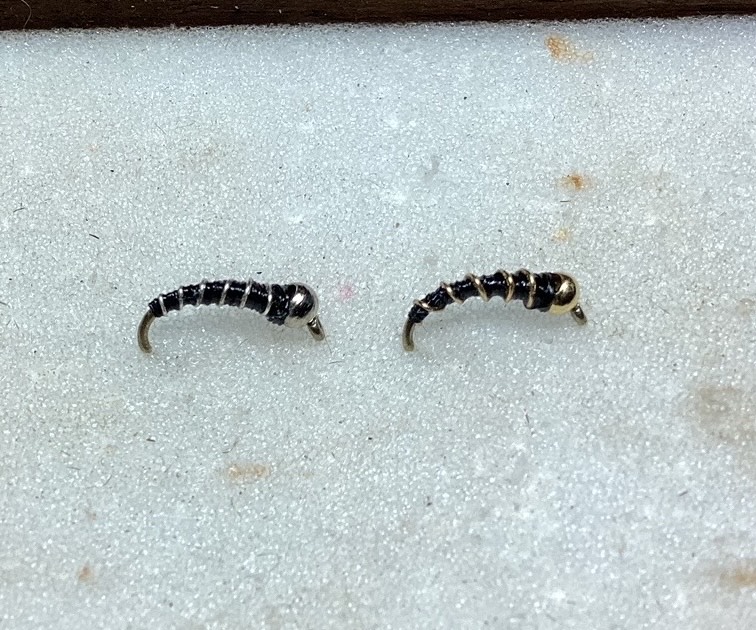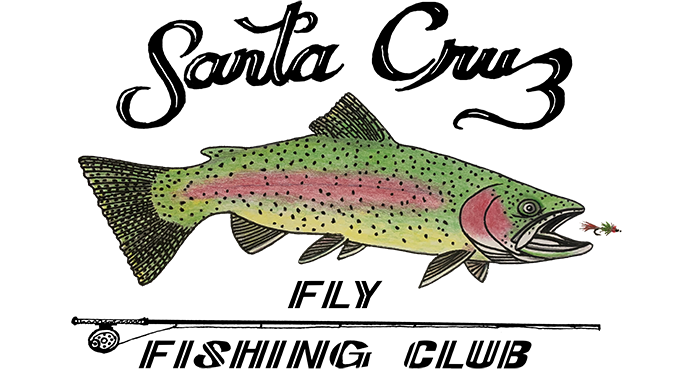
Midges are the most abundant food for trout. During the winter, it is their main source of food. They come in a great variety of sizes and colors. This pattern simulate the midge pupa stage, therefore is fish subsurface. The bead usually represents the air bubble that brings them to the surface to hatch out. These two particular patterns are very commonly used and are very effective. Their size has nothing to do with the size fish they catch.
HOOK: TMC 2457 or similar scud hook Sizes 16-22
Crimp barb.
BEAD: silver for zebra midge, gold for tiger midge. Use size chart online for comparison of hook size to bed size.
Feed bead onto hook, small opening first.
THREAD: black 6/0, 8/0 or 12/0 depending on size of hook.
Attach behind bead. Touching wraps to part way around bend of hook (see picture). Wrap back to bead.
RIB: silver for zebra midge, gold for tiger midge. Size medium, small, or fine, depending on size of hook.
Place on near side of hook shank, wrap in place back to rear thread wraps. make two thread wraps behind rib.
BODY: thread as above
At this point in going forward, spin bobbin counter clockwise to make thread lie flat. Wrap forward, beginning in front of wire up to bead with touching wraps. Wrap thread backward 3/4 of shank then forward to bead again. Then halfway back, then 1/4 back leaving thread, hanging behind bead.
RIB (continued) spiral wrap forward in about five wraps, each getting slightly further apart than the last. Tie off with several wraps behind wire and several in front of wire then one behind wire and one in front of wire. Twist wire in awinterhelicopter type motion to cut. Never use good scissors.
FINISH: make multiple thread wraps behind bead and covering tied off wire rib. Whip finish. Cut thread. Apply glue. Coat body with UV resin, or glue, or sally Hansen hard as nails.
Posted on October 26th, 2023
